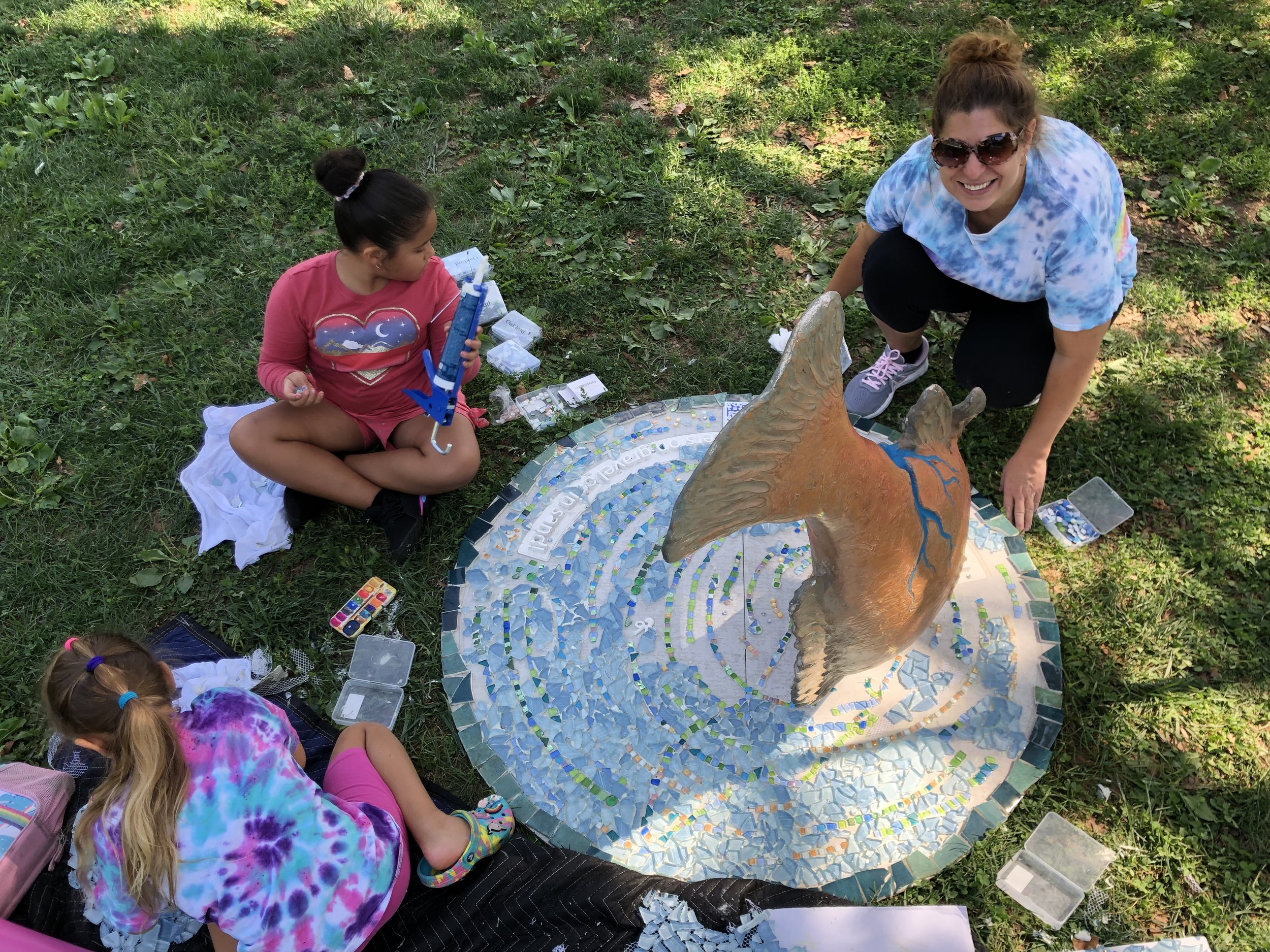RIVER ALIVE! LEARNING TRAIL
Project: Playful learning through an OUTDOOR activation FOCUSED ON building early literacy skills and WATERSHED HEALTH IN AN URBAN ENVIRONMENT
Concept and Design Development Completed SPRING 2021
ribbon cutting September 14,2022
Made possible through the support of the William Penn Foundation
The Learning Trail is an educational initiative that activates the urban public spaces of Tookany/Tacony-Frankford Creek with watershed awareness-building and inspiring engagement opportunities to be shared between young children and their caregivers. This Learning Trail will extend the River Alive! content and experience into urban public spaces, with a specific focus for this pilot project on the sidewalk area around Juniata Park, located in the North East section of Philadelphia.
Located next to Ferko Recreation Center which is adjacent to Tacony Creek Park, the trail includes six stations, each featuring a unique animal sculpture, seating, and English/Spanish bilingual signage for families to learn about the local watershed and nearby Tacony Creek.
The sculptures feature six animals that live in the watershed: fox, fish, turtle, heron, watersnake, and a river otter. Each sculpture includes an interactive water feature (a spout for the water to flow down) and an animal song accessed via a QR code, intended to show that the animals are our neighbors and part of the diverse urban community.
Meeting people where they are in their everyday lives, this initiative is a playful intervention that consists of temporary hands-on components and associated programming that pop-up along the trail to collectively provide connected opportunities that build on one-another for self-guided and/or facilitated play.
The content of the trail builds on the messaging of the River Alive! exhibition located at the Independence Seaport Museum (and funded by the William Penn Foundation), but is filtered through a local lens that explores the animals present within the creek system that runs along Juniata Park.
Our creative philosophy is grounded in the belief that individual engagement is best facilitated by authentic experiences that afford multiple pathways for engagement. We worked with ttfwatershed.org and targeted community members to enrich this highly trafficked area by families on foot with quality engagement opportunities to be shared between young children (primary target audience of 3 to 8 year-olds) and their care-givers of the neighborhood that both creatively inspire them while connecting them with basic watershed knowledge and easily understood conversation prompts and hands-on play.
A stakeholder kick-off meeting with Philadelphia Parks and Recreation, Streets Dept. and others was followed up by a robust Community Workshop and Feedback Session, which was held at the “Fisharium” in the River Alive! exhibition space at Independence Seaport Museum on February 29, 2020. The design team created a set of mapping assets (paper elements) as a way to engage the community members in an open discussion about Juniata Park. Our session goals were to:
Learn from the people who live near Juniata Park;
Better understand the diverse community in and around Tookany/Tacony-Frankford Creek;
Discover and document what community members love about Juniata Park and surrounding areas, and to become aware of challenges community members see in the neighborhood (especially around the park);
Envision together a future for the park that includes what community members would love to see and do as both families and individuals, if given the opportunity.
Several key findings came out of this Workshop:
People love the wooded trails in Tacony Creek Park. They would like more pathways, benches and places to take breaks, and more educational activities and guides for families so there are things to do on the pathways and trails.
Park users are particularly attracted to the animals they see in the park: birds, foxes, butterflies, turtles, squirrels, bunnies, bugs, salamanders, frogs and ducks. They would greatly value more in situ signage and information about the wildlife, trees and plants seen on the trails and throughout the park. Having this information or any guides be bilingual was seen as very important for accessibility.
They would like to see sculptures or other physical elements that indicate that the park is a safe family area, which is not how the park is currently perceived by many.
The community would value more group activities and programs in the park, particularly those led by TTF Watershed Partnership, and prompts that encourage physical activity. People would be willing to sign up and receive alerts when new activities/challenges/programs are added for families.
Challenges, particularly temporary ones that encourage getting outside to experience transient events like bird migrations, would keep families engaged and coming back to the park. This could include river activities—water sampling, interacting with the water, ways to better understand river health on a given day, signage that explains how healthy fish and bugs populations can improve stream health—and other science-based playful and educational interactions.
With this information in hand, the design team launched the concept design for the Learning Trail.
Project principles that are included in the graphics.
Playful fun builds language skills.
Talking about likes and dislikes builds confidence.
Comparing and contrasting creates critical thinkers.
Talking about climate builds scientific thinking.
Moving our bodies boosts learning.
Patterns are the building blocks of math.
Exploring what our body needs to grow helps us understand biology.
Understanding the physics and history of water helps grow scientific minds.
Learning that healthy bodies need healthy food helps us understand wildlife.
Curiosity about rainbows can lead to scientific inquiry.
We learn about culture and history by understanding how people traveled.
Exploring the world with our senses brings learning to life.
About the Tookany/Tacony-Frankford Watershed Partnership
TTF connects watershed residents to their creeks. Through hands-on education, stewardship, restoration, and advocacy, TTF empowers watershed constituents to take care of and improve the impaired waterways, parks, and trails across its 30 square miles. Working with neighbors, TTF has planted thousands of native trees, shrubs, and flowers along creeks and in rain gardens at schools, parks, places of worship, and even backyards to slow down and clean pollution before it enters creeks. TTF uses many tools to share a love for water and nature with people of all ages and to show how we can all make a difference.
With STEAM-based signage and activities, we weave a compelling river story that is: fun to play with; cultivates inter-generational communication; creates a foundation for building 21st century learning skills; sets out to support children’s healthy development; and serves as a road map for replication by other organizations and expansion watershed-wide.
The activations also include rain poetry (messages that only appear when wet) and two crosswalk murals.
On September 9, 10, and 11th, TTF hosted community art sessions during which neighbors co-created artistic mosaics on the bases of the animal sculptures. More than 100 people participated in these events.
Tookany/Tacony-Frankford Watershed Partnership, Inc. is our primary community partner linking the project team with key community members and groups while providing on-the-ground guidance and program facilitation.
The planning, design and implementation phases of this project were made possible by the support of the William Penn Foundation.
BENCHMARKING
The schematic design phase of this work began with an extensive research and benchmarking process to identify striking experiences that engage people outdoors, and effectively provide a perspective shift about the environment that surrounds us. This benchmarking was guided by the concept of “Playful Learning Landscapes,” as defined by the Center for Universal Education at Brookings:
Playful Learning Landscapes seeks to transform everyday spaces into playful learning opportunities to maximize “the other 80 percent” of time that children spend outside school.
Playful Learning Landscapes lies at the intersection of the growing Child Friendly City movement and a global development agenda that calls for access to high-quality early education for all.
Philadelphia has served as a model Playful Learning Landscapes city, with a wide range of installations and activities including permanent outdoor structures, short-term pop-up events, and one-time large events in public spaces. The River Alive! Learning Trail in the Juniata Park neighborhood is meant to be one more element in this transformative movement.
EDUCATIONAL
The design approach, messaging and activity prompts were developed following the Workshop and Benchmarking in collaboration with education specialist Karen Lefkovitz. Together, we used the content of River Alive! along with the communication standards for “Playful Learning Landscapes” to create a matrix of age-appropriate ideas and activities designed for our target audience of children aged 3, 4, and 5 and up.
These educational matrices defined STEAM-based signage and activities that create a compelling river story that is: fun to play with; cultivates intergenerational communication; creates a foundation for building 21st century learning skills; and sets out to support children’s healthy development that gets them active and curious within the natural world that surrounds us and on which we all rely.
This initiative views children as natural curious explorers of the world, and their caregivers as their vital “first-teachers.” As a result, the activity prompts are designed to encourage caregivers to participate along with their children, deepening play and learning through intergenerational communication.









